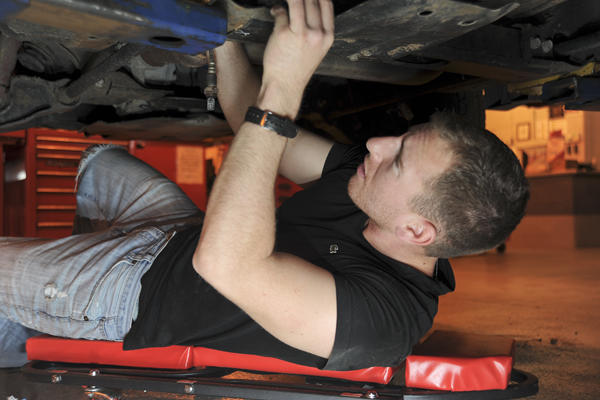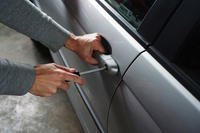After checking your brake system, if you find that you have a leak or you have to bleed your brakes, you'll have to restore the brake fluid in your master cylinder to its proper level. Here are some things that you should know about buying and using brake fluid:
- Always use top-quality brake fluid from a well-known manufacturer. Many vehicles call for either D.O.T. 3 or D.O.T. 4 fluid. D.O.T. 5 is now available, too; it's a great improvement because it doesn't eat paint or absorb moisture. The downside is that because D.O.T. 5 doesn't absorb it, water that gets into your brake system can form little pools that can corrode your brakes.
Sometimes the type of brake fluid you should use is listed on the master cylinder reservoir cover or cap. If not, check your owner's manual or ask the service department at your dealership for the proper type for your vehicle.
- Caution: Exposure to air swiftly contaminates brake fluid. The oxygen in the air oxidizes it and lowers its boiling point. Brake fluid also has an affinity for moisture, and the water vapor in the air can combine with the brake fluid, lowering its boiling point and, in cold weather, forming ice crystals that make braking difficult. Adding fluid contaminated with water vapor to your brake system can rust the system and create acids that etch your wheel cylinders and master cylinder and foul your brakes, causing them to work poorly — or not at all. It can also destroy vital parts of ABS and other expensive braking systems.
Tip: If you're just going to add brake fluid to your system, buy a small can of the correct type, add the fluid to your master cylinder, and either throw the rest away or use it only in emergencies. The stuff is pretty cheap, and your vehicle shouldn't need more fluid after you fix a leak. If you keep a can with only a little fluid left in it, the air that fills up the rest of the space in the can contaminates the fluid no matter how quickly you recap it.
- Caution: Keep brake fluid away from painted surfaces — unless it's D.O.T. 5, it eats paint. (If this stuff seems scary, remember that the same statements can be made about turpentine and nail polish remover.)
You should flush and replace the fluid in your brake system every two years. Service facilities now do this with brake flushing machines. If you want to do it yourself, follow these steps:
- Use a cheap, plastic turkey baster to remove the old, dirty fluid from the master cylinder reservoir.
- Use a lint-free cloth to wipe out the reservoir — if you can get in there.
- Pour new brake fluid into the reservoir just until it reaches the "Full" line, replace the cap on the reservoir.
As you bleed the brakes, the new fluid pushes the old fluid out of the system. Continue to bleed the brakes until you see clean, clear fluid exitingthe bleeder screw.
From Auto Repair for Dummies, copyright © 2009 by Wiley Publishing, Inc., Indianapolis, Indiana. Used by arrangement with John Wiley & Sons, Inc.










